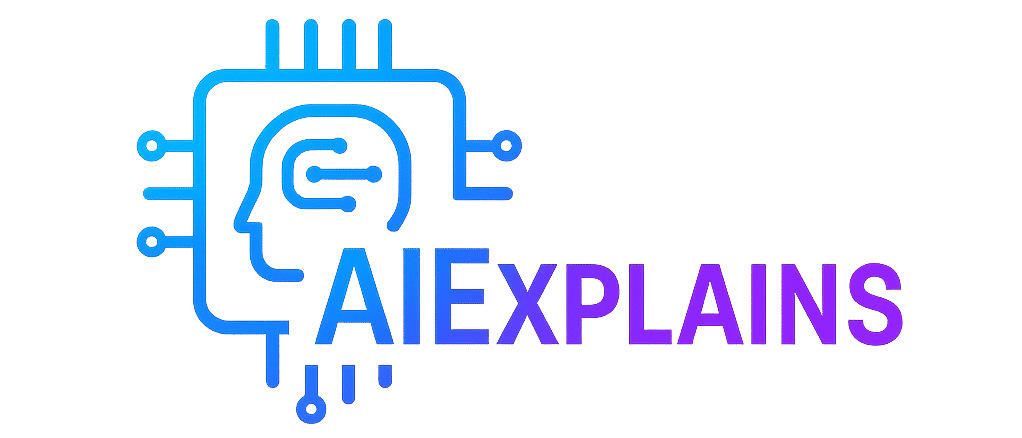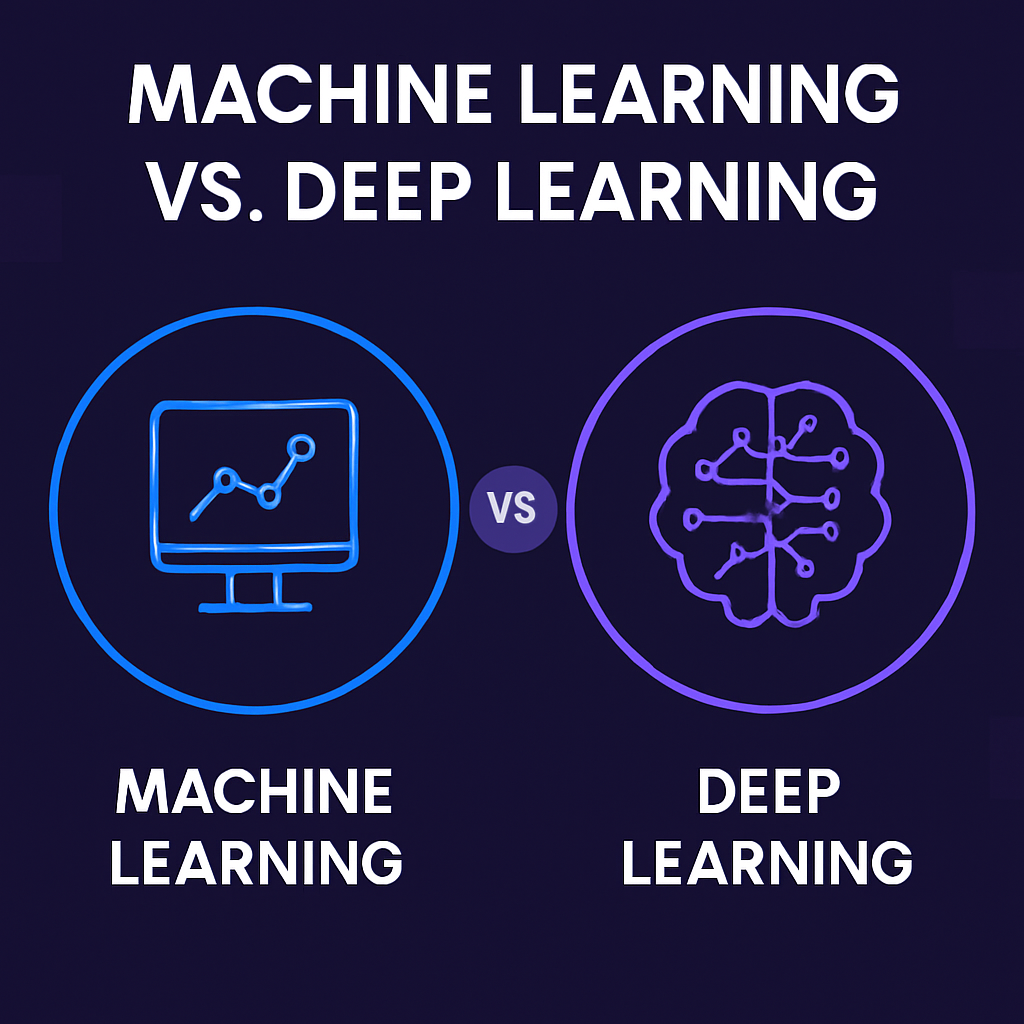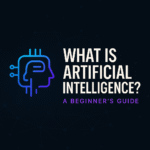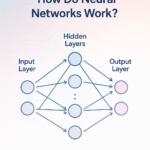💡 Introduction
You’ve probably heard both terms — Machine Learning (ML) and Deep Learning (DL) — used often in AI conversations. But are they the same? Not quite.
This post breaks down the key differences, real-world examples, and when each one is used — in simple, beginner-friendly language.
🔍 Quick Definitions
- Machine Learning (ML):
A subset of AI where computers learn from data to make predictions or decisions without being explicitly programmed. - Deep Learning (DL):
A specialized branch of ML that uses artificial neural networks — inspired by the human brain — to solve more complex problems.
📊 Key Differences Between Machine Learning and Deep Learning
| Feature | Machine Learning | Deep Learning |
|---|---|---|
| Definition | Algorithms that learn from data | Neural networks that simulate the human brain |
| Data Requirements | Works well with smaller datasets | Requires large datasets to perform well |
| Hardware Needs | Can run on standard CPUs | Needs high-performance GPUs |
| Feature Engineering | Manual: requires human effort | Automatic: the model finds patterns itself |
| Training Time | Usually faster | Can take hours, days, or more |
| Use Cases | Spam filters, recommendation systems | Self-driving cars, voice assistants, image analysis |
🧠 A Real-World Analogy
Think of Machine Learning like teaching a child to recognize animals by giving them flashcards and explaining each one.
Now, think of Deep Learning like giving that child thousands of pictures and letting them figure out the differences on their own. More powerful — but also more resource-intensive.
🛠 Examples in Action
- Machine Learning
- Email spam filters
- Credit scoring
- Movie recommendation engines
- Deep Learning
- Facial recognition in photos
- Voice recognition (like Siri or Alexa)
- Self-driving cars interpreting road signs
⚖️ When to Use What?
- Use Machine Learning when:
- You have limited data.
- You want quick, interpretable results.
- Your hardware is basic (no GPUs).
- Use Deep Learning when:
- You have huge datasets (like images, audio, or video).
- Accuracy is critical, even if it takes more time.
- You have access to powerful hardware or cloud computing.
🔚 Final Thoughts
Machine Learning and Deep Learning are not rivals — they’re parts of the same AI family. Think of ML as the solid foundation and DL as the advanced evolution.
If you’re just starting with AI, begin by understanding ML concepts. Deep Learning will make more sense once you’ve got those basics down.



